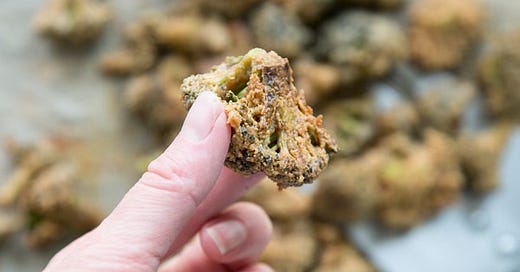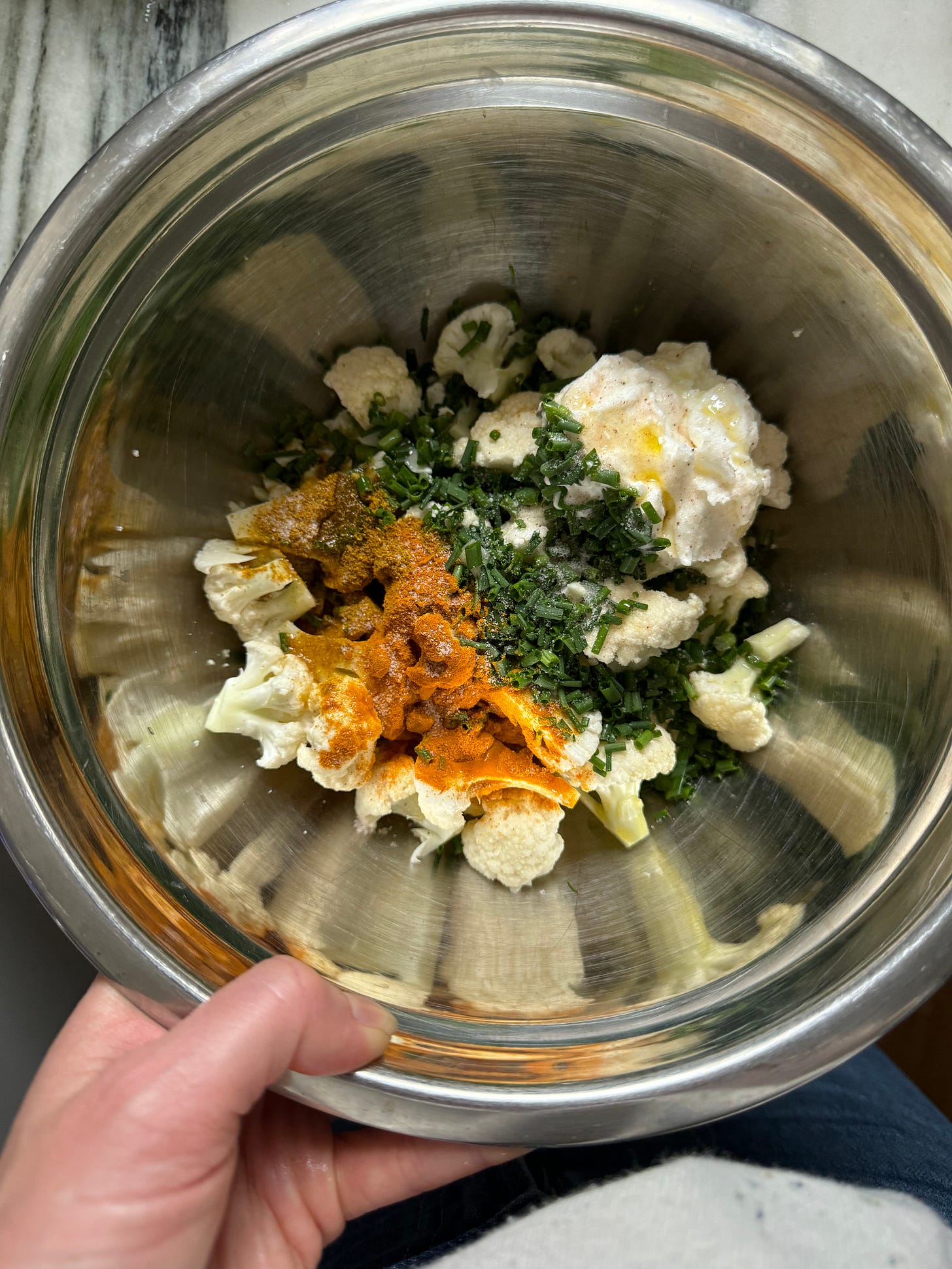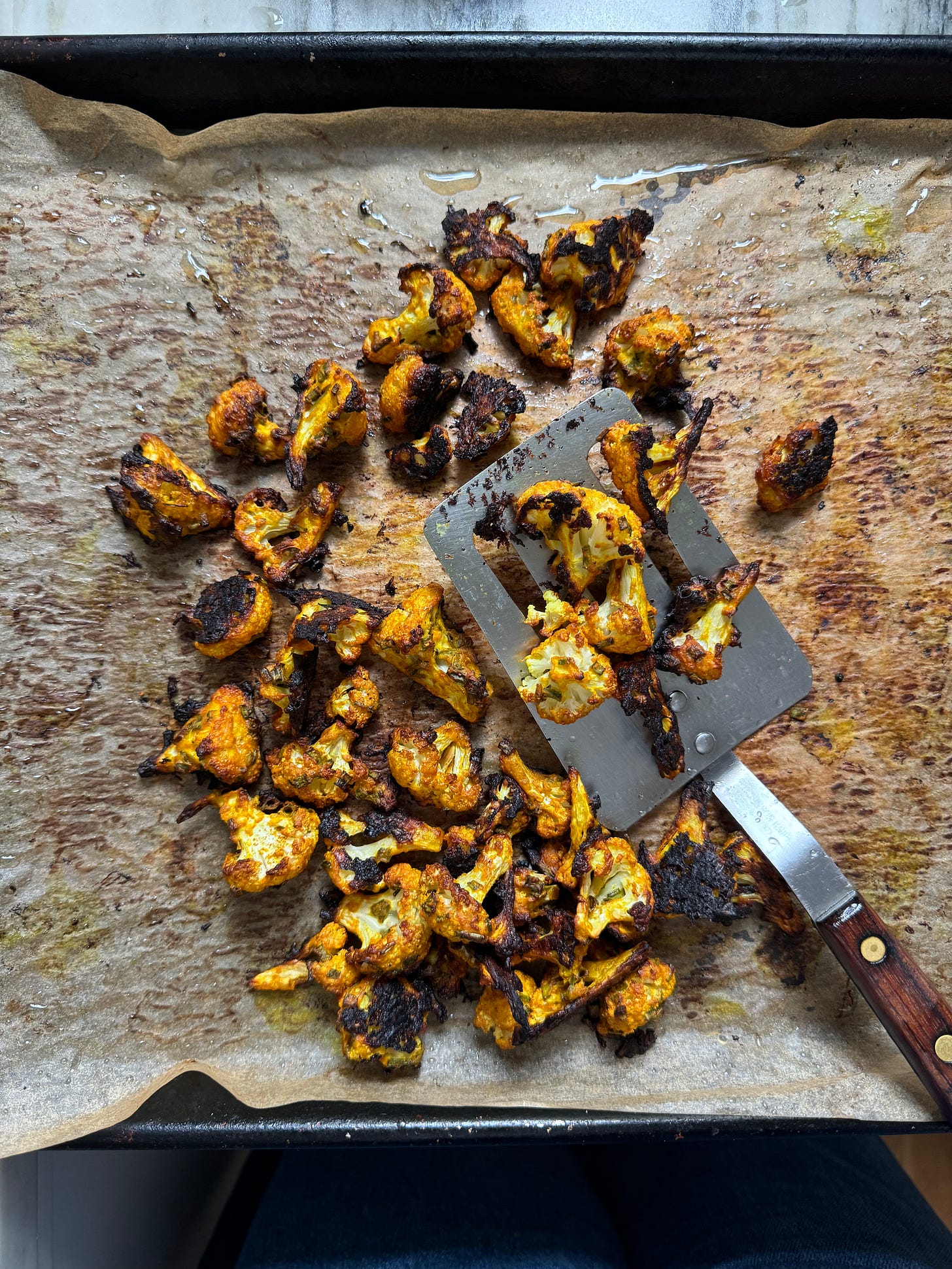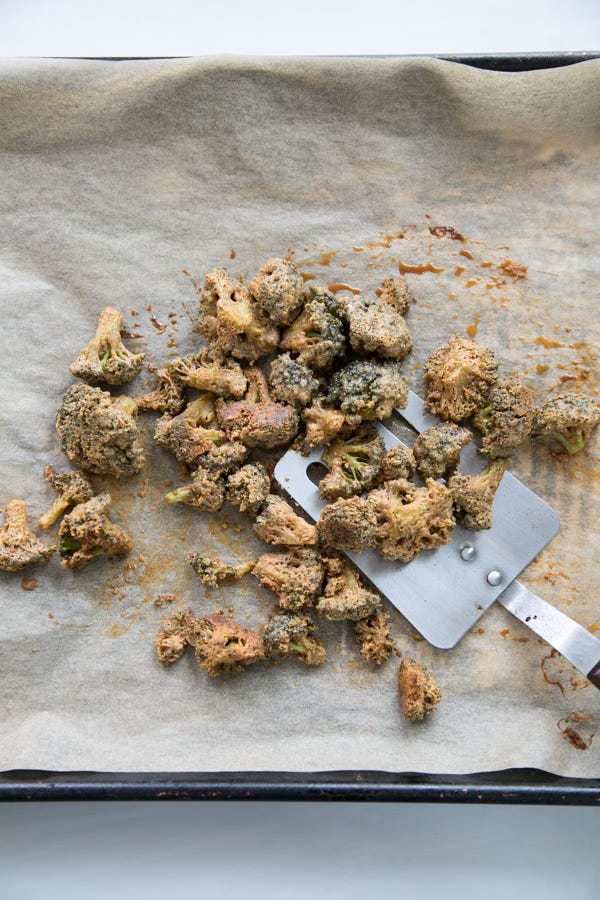Crispy Peanut Broccoli + Curried Cauliflower Bites
Same same, but different: strategies for trying new foods with toddlers
I had a conversation recently with one of my girlfriends about the difference between picky eating and something else entirely: rigidity.
So many parents label their kids picky for exerting their preferences. For sticking with dishes that are familiar rather than trying something new. For opting for a sweet, mushy mouthful of banana rather than anything on their dinner plate.
In fits and starts, this is all developmentally normal. And at the end of the day (or week rather), if your kid eats 5 to 10 different vegetables, can we really call this pickiness?
We are all creatures of habit. Even as an adult, every year, I can feel a constriction. My tolerance for newness, for risk, for anything outside the bounds of my safe habits slowly calcifying.
Kids are no different. As we get older, we become more rigid.
My toddler definitely falls into this category, but I do my best to combat her new food fragility with small tweaks to the things she already likes in hopes of flexing her flexibility muscles.
Every munch menu recipe has a section at the bottom: Same Same, But Different!
Sure, this acts as a guide for substituting things you might more readily have on hand, or foods that better fit your kids’ preferences. But more importantly, it gives you a guide for SHAKING THINGS UP.
Here are a few very small ways I use the SSBD (same same but different) philosophy in my own meal prep:
Same pasta in tomato sauce, new shape! Bowties, elbows, shells—keeping her on her toes hopefully means she’ll be less likely to throw a fit at a restaurant down the road when they don’t have penne. I’ll take it.
Same vegetable, different color. Does your kid like carrots? Try purple ones! Into red peppers? How about orange or yellow. While bowties have the same nutritional value as elbows, different colored vegetables contain different antioxidants. So even if you’re stressed that your kid only eats peppers or potatoes, there are still a handful of different varieties for you to exploit under that umbrella. Even Yukon gold potatoes contain a different mineral profile from russets.
Same sauce, new vegetable. In the spirit of today’s two interchangeable veggie sides, once you find one preparation or seasoning that works for your toddler, try swapping in a different plant. I’m going to do a whole letter on the concept of “hero sauces” soon!
So let’s talk about today’s recipes: two very simple roasted veggies with different coatings.
The peanut butter coated broccoli gets a little crispier than cauliflower might, but if your kid is a PB addict, try using the recipe below with cauliflower. Same goes for the curry-yogurt mix in the cauliflower dish. I got this recipe from my favorite cookbook Baby Led Feeding (written by fellow substacker, Jenna Helwig!) and have used it on chicken and roasted carrots, among other things.
If the idea of trying a new meal or recipe (with possibly mixed results) intimidates you, take a baby step with one of these strategies. Adding variety doesn’t have to be such a heavy lift. And it’s just as important for us as cooks to flex this muscle as it is for the little mouths at our table.
Happy munching!
Crispy Peanut Broccoli
Makes 2-4 munch servings
This two ingredient side uses peanut butter to add an addictive coating that creeps into every nook and cranny of your broccoli florets. Straight out of the oven, the broccoli is slightly crispy, but it won’t maintain that as a meal prep / make ahead side. My toddler doesn’t mind at all. You had her at peanut butter.
Keep reading with a 7-day free trial
Subscribe to Munch Menus to keep reading this post and get 7 days of free access to the full post archives.








